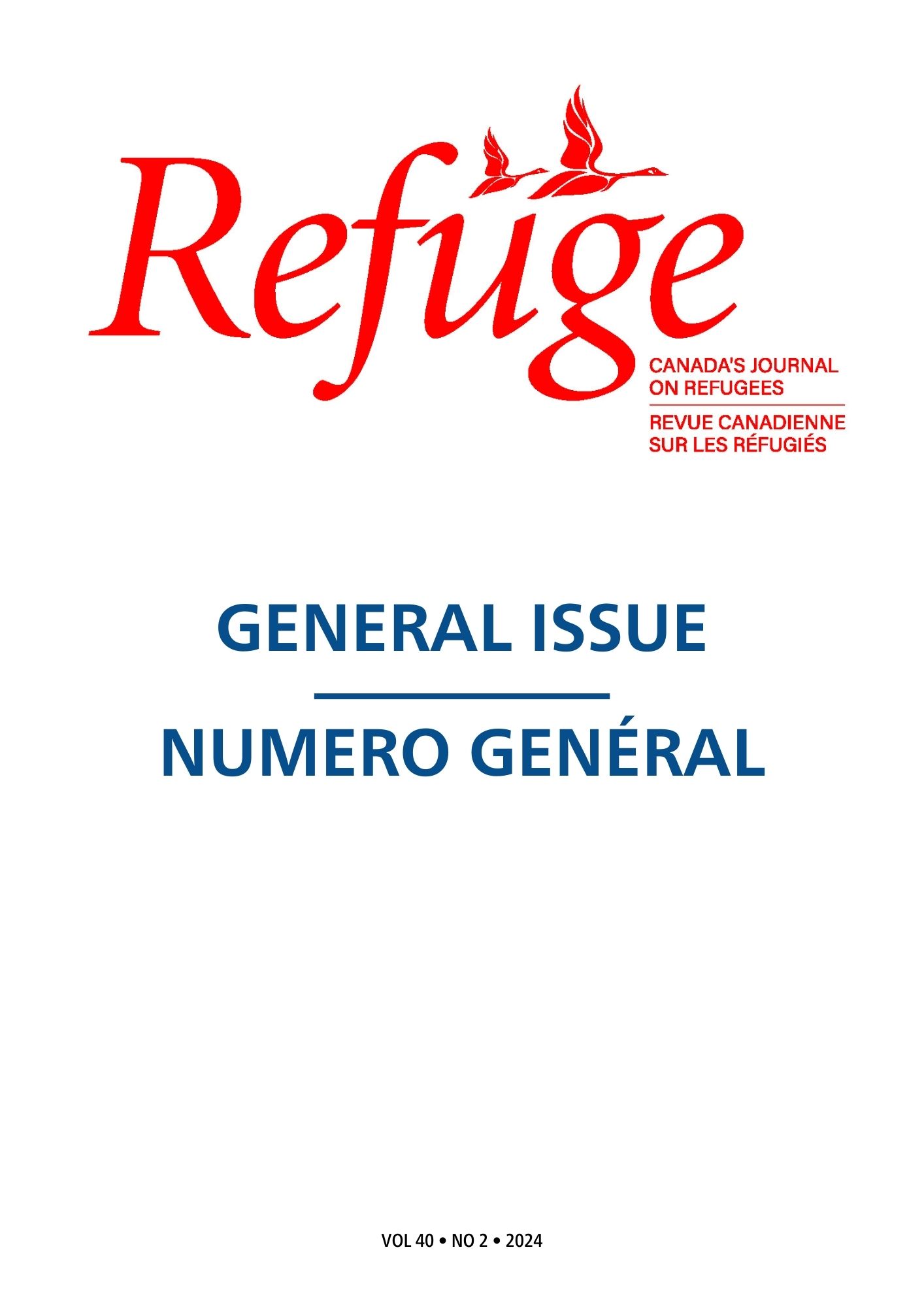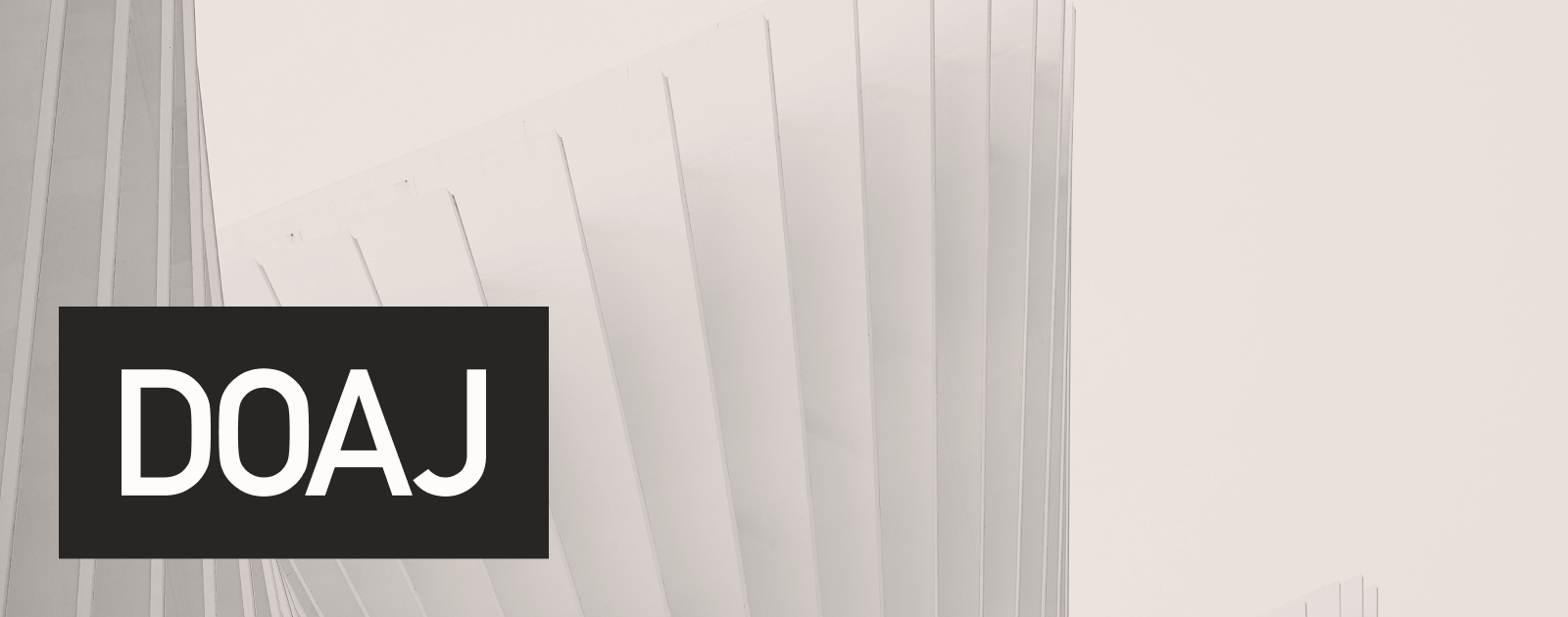Addis Ababa as a City (e)scape of Refugee Resilience: A Trialectical Perspective
DOI:
https://doi.org/10.25071/1920-7336.41410Keywords:
Addis Ababa, Edward Soja, psychological well-being, resources, sefers, thirding as othering, urban refugee resilienceAbstract
Using Edward Soja’s thirdspace theory, this paper spotlights Addis Ababa as a city of refugee resilience. Beyond the real and imagined representations of resilience, the thirdspace illuminates the multiplicity of refugee resilience in the forms of hope, transience, religiosity, retrospection, flexibility, cultural adaptation, frugality, cultural resources, diaspora ties, co-ethnic support, and transnational and local ties. However, refugee resilience is severely constrained by legal restrictions, policy–practice gaps, resource shortages, language barriers, internal conflict, fear of being targeted, misconceptions about refugees, and some refugees’ strong fervour to emigrate to the West. The study emphasizes the importance of the thirdspace for understanding the incompatibilities of refugee resilience and for improving their well-being and support.
Metrics
References
Alawneh, S. M., & Rashid, M. (2022). Revisiting urban resilience: A review on resilience of spatial structure in urban refugee neighbourhoods facing demographic changes. Frontiers in Sustainable Cities, 4, 806531. https://doi.org/10.3389/frsc.2022.806531
Adem, A. M., Kebede, G. F., & Kassa, T. M. (2023). Forced Migration and Resilience in the EHAGL Region: Resource Caravans and Passageways of Adult Urban Refugees in Addis Ababa. Quarterly on Refugee Problems-AWR Bulletin, 62(3), 200-224. DOI: https://doi.org/10.57947/qrp.v62i3.78
Adugna, G. (2021). Once primarily an origin for refugees, Ethiopia experiences evolving migration patterns. Migration Policy Institute.
Anholt, R., & Sinatti, G. (2020). Under the guise of resilience: The EU approach to migration and forced displacement in Jordan and Lebanon. Contemporary Security Policy, 41(2), 311-335.
Betts, A., Fryszer, L., Omata, N., & Sterck, O. (2019). Refugee Economies in Addis Ababa: Towards Sustainable Opportunities for Urban Communities? Refugee Studies Centre.
Brown, A., Mackie, P., Dickenson, K., & Gebre-Egziabher, T. (2018). Urban refugee economies: Addis Ababa, Ethiopia. International Institute for Environment and Development.
Brun, C. (2001). Reterritorilizing the relationship between people and place in refugee studies. Geografiska Annaler: Series B, Human Geography, 83(1), 15-25.
Cortés Ferrández, P. (2019). Resilience spaces: rethinking protection. Forced Migration Review, (62).
Gale, N. K., Heath, G., Cameron, E., Rashid, S., & Redwood, S. (2013). Using the framework method for the analysis of qualitative data in multi-disciplinary health research. BMC medical research methodology, 13(1), 1-8. https://doi.org/10.1186/1471-2288-13-117
Ryan, D., Dooley, B., & Benson, C. (2008). Theoretical perspectives on post-migration adaptation and psychological well-being among refugees. Towards a resource-based model. Journal of Refugee Studies, 21(1). 1-18. https://doi.org/10.1093/jrs/fem047
Ryan, R. M., & Deci, E. L. (2001). On happiness and human potentials. A review of research on hedonic and eudaimonic well-being. Annual Review of Psychology, 52(1), 141-166. https://doi.org/10.1146/annurev.psych.52.1.141
Hawkes, C., Norris, K., Joyce, J., & Paton, D. (2020). Resilience factors in women of refugee background: a qualitative systematic review. Community Psychology in Global Perspective, 6(2/1), 101-127. https://doi.org/10.1285/i24212113v6i2-1p101.
Hubbard, P., & Kitchin, R. (Eds.). (2011). Key thinkers on space and place. Sage.
Hutchinson, M., & Dorsett, P. (2012). What does the literature say about resilience in refugee people? Implications for practice. Journal of Social Inclusion, 3(2), 55-78. http://www104.griffith.edu.au/index.php/inclusion/article/view/206
IOM (2014). The Migrant. IOM Special Liaison Office, Addis Ababa Newsletter, 8(2). 1-10. https://ethiopia.iom.int/sites/g/files/tmzbdl996/files/documents/The_Migrant_November_Newsletter_Vol%25208.pdf
Johansson, L. (2018). The In-Betweens of Space and Time in Transit: Spatial and temporal realities for urban refugees in Eastleigh, Nairobi. University of Uppsala. urn:nbn:se:uu:diva-354371
Kiteki, B. N. (2016). The case for resilience in African refugees: A literature review and suggestions for future research. Vistas online, 66.
Lavie-Ajayi, M., & Slonim-Nevo, V. (2017). A qualitative study of resilience among asylum seekers from Darfur in Israel. Qualitative Social Work, 16(6), 825-841. https://doi.org/10.1177/1473325016649256
Lyytinen, E. (2015). Refugees’ Conceptualizations of “Protection Space”: Geographical Scales of Urban Protection and Host–Refugee Relations. Refugee Survey Quarterly, 34(2), 45-77. https://doi.org/10.1093/rsq/hdv001
Mekonnen, T. (2019). Access to livelihood opportunities and Basic services among urban refugees in Addis Ababa: Challenges and opportunities. Ethiopian Journal of Development Research, 41(2), 85-118.
Netto, G., Baillie, L., Georgiou, T., Wan Teng, L., Endut, N., Strani, K., & O’Rourke, B. (2022). Resilience, smartphone use and language among urban refugees in the Global south. Journal of Ethnic and Migration Studies, 48(3), 542-559. https://doi.org/10.1080/1369183X.2021.1941818
Sleijpen, M., Mooren, T., Kleber, R. J., & Boeije, H. R. (2017). Lives on hold: A qualitative study of young refugees’ resilience strategies. Childhood, 24(3), 348-365. https://doi.org/10.1177/0907568217690031
Soja, E. W. (1996). THIRDSPACE: Journeys to Los Angeles and other real-and-imagined Places. Blackwell.
Southwick, S. M., Bonanno, G. A., Masten, A. S., Panter-Brick, C., & Yehuda, R. (2014). Resilience definitions, theory, and challenges: interdisciplinary perspectives. European Journal of Psychotraumatology, 5(1), 25338. doi: 10.3402/ejpt.v5.25338
Thomas, F. C., Roberts, B., Luitel, N. P., Upadhaya, N., & Tol, W. A. (2011). Resilience of refugees displaced in the developing world: a qualitative analysis of strengths and struggles of urban refugees in Nepal. Conflict and health, 5, 1-11. https://doi.org/10.1186/1752-1505-5-20
Tippens, J. A. (2017). Urban Congolese refugees in Kenya: The contingencies of coping and resilience in a context marked by structural vulnerability. Qualitative Health Research, 27(7), 1090-1103. DOI: 10.1177/1049732316665348
Tippens, J. A. (2020). Urban Congolese refugees’ social capital and community resilience during a period of political violence in Kenya: a qualitative study. Journal of Immigrant & Refugee Studies, 18(1), 42-59. https://doi.org/10.1080/15562948.2019.1569744
Tsehaye, F. (2018). Refugee inclusive urban planning. A case study of Addis Ababa. Radboud University Nijmegen: Nijmegen School of Management
UNHCR (2024). UNHCR: Ethiopia. https://www.unhcr.org/countries/ethiopia
UNHCR (2023). Addis Ababa quarterly urban factsheet. Addis Ababa. https://reliefweb.int/report/ethiopia/unhcr-ethiopia-addis-ababa-quarterly-urban-fact-sheet-30-april-2023
van Mastrigt, R. (2015). Comprehending refugees’ space negotiations: An analysis from a spatial perspective. Wageningen University.
Verghis, S., & Balasundrum, S. (2019). Urban refugees: The hidden population. In Pascale, A. & Reidpath, D. (Eds.) The health of refugees: Public health perspectives from crisis to settlement (2nd edn). https://doi.org/10.1093/oso/9780198814733.003.0007
Walther, L., Amann, J., Flick, U., Ta, T. M. T., Bajbouj, M., & Hahn, E. (2021). A qualitative study on resilience in adult refugees in Germany. BMC public health, 21, 1-17. https://doi.org/10.1186/s12889-021-10817-6
Yotebieng, K. A., Syvertsen, J. L., & Awah, P. (2019). ‘Is Wellbeing Possible when You Are Out of Place?’: Ethnographic Insight into Resilience among Urban Refugees in Yaoundé, Cameroon. Journal of Refugee Studies, 32(2), 197-215. https://doi.org/10.1093/jrs/fey023
Downloads
Published
How to Cite
Issue
Section
License
Copyright (c) 2025 Aman Mohamedsaid Adem, Getahun Fenta Kebede, Teferee Makonnen Kassa

This work is licensed under a Creative Commons Attribution-NonCommercial 4.0 International License.
Refuge authors retain the copyright over their work, and license it to the general public under the Creative Commons Attribution-Non Commercial License International (CC BY-NC 4.0). This license allows for non-commercial use, reproduction and adaption of the material in any medium or format, with proper attribution. For general information on Creative Commons licences, visit the Creative Commons site. For the CC BY-NC 4.0 license, review the human readable summary.







